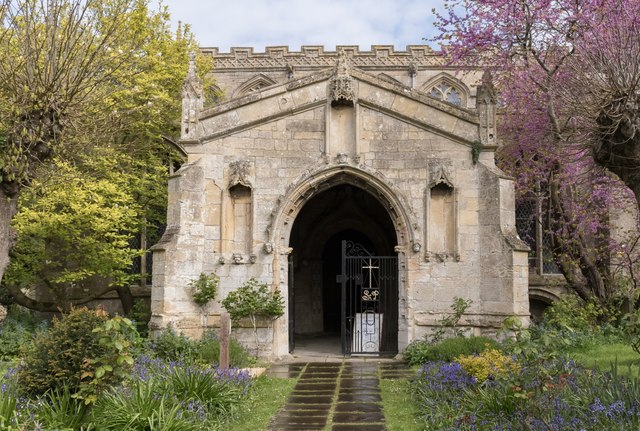TF2331 : South porch, Ss Peter & Paul church, Gosberton
taken 9 months ago, near to Gosberton, Lincolnshire, England

Statue niches inside with traces of original colour.
Grade I listed
There was probably a church here in Saxon times although no trace is left. There is evidence of a 12th century Norman Church seen in the north transept and foundations of two piers. The church seen today, was built at the end of the 13th century and continued on for 150 years.
The church is cruciform, and the central tower has six bells. Above is a spire with crockets and flying buttresses. The spire is 176 feet high there are three tiers of lucarnes in alternative directions. Among the gargoyles on the east wall of the tower is an elephant. Beneath the tower is a fine lierne vault.
The nave has a clerestory of eight two-light windows and north and South aisles with four bays. The piers are from the perpendicular period.
There is a south chancel chapel of two bays, with triple sedilia and piscina, from the Decorated period.
The south transept has a tomb recess with a monument containing a 14th century cross legged knight, with a sword and shield, thought to be Sir Roger De Rye who died in C. 1280. His Lady lies next to him.
There is a medieval screen between the transept and the Lady Chapel with carved figures above, which are the work of Belgian refugees from the First World War.
The Chancel was rebuilt and lengthened in 1866.
The north transept of the church is now behind the organ and houses a large heating boiler, and appears to be used as a vestry and storage area.
There is a finely carved pulpit depicting St Peter and St Paul, standing on a marble base.
There are many plain glass windows in the church which were probably replacements for originals smashed by Cromwell's army in the Civil War. There were also more floor brasses which were also removed.
There is a 19th century organ by Holdich.
